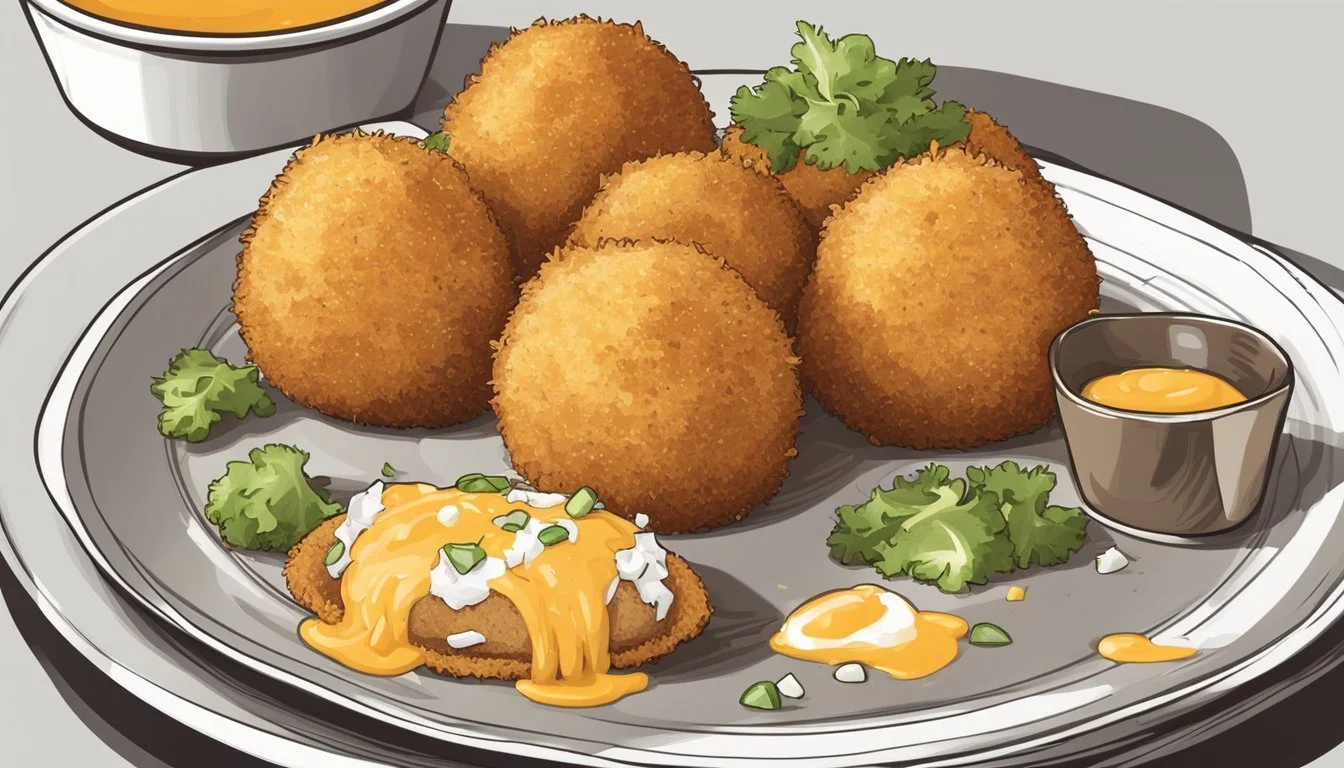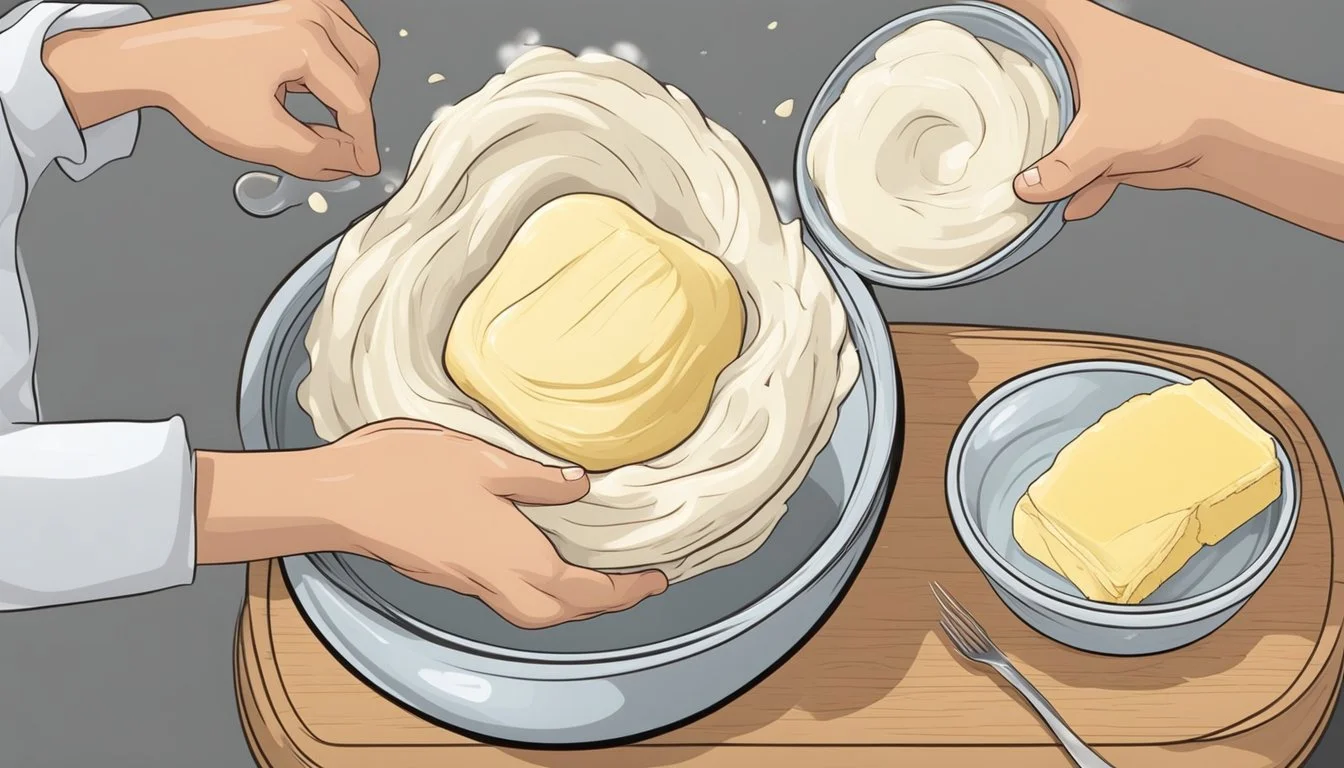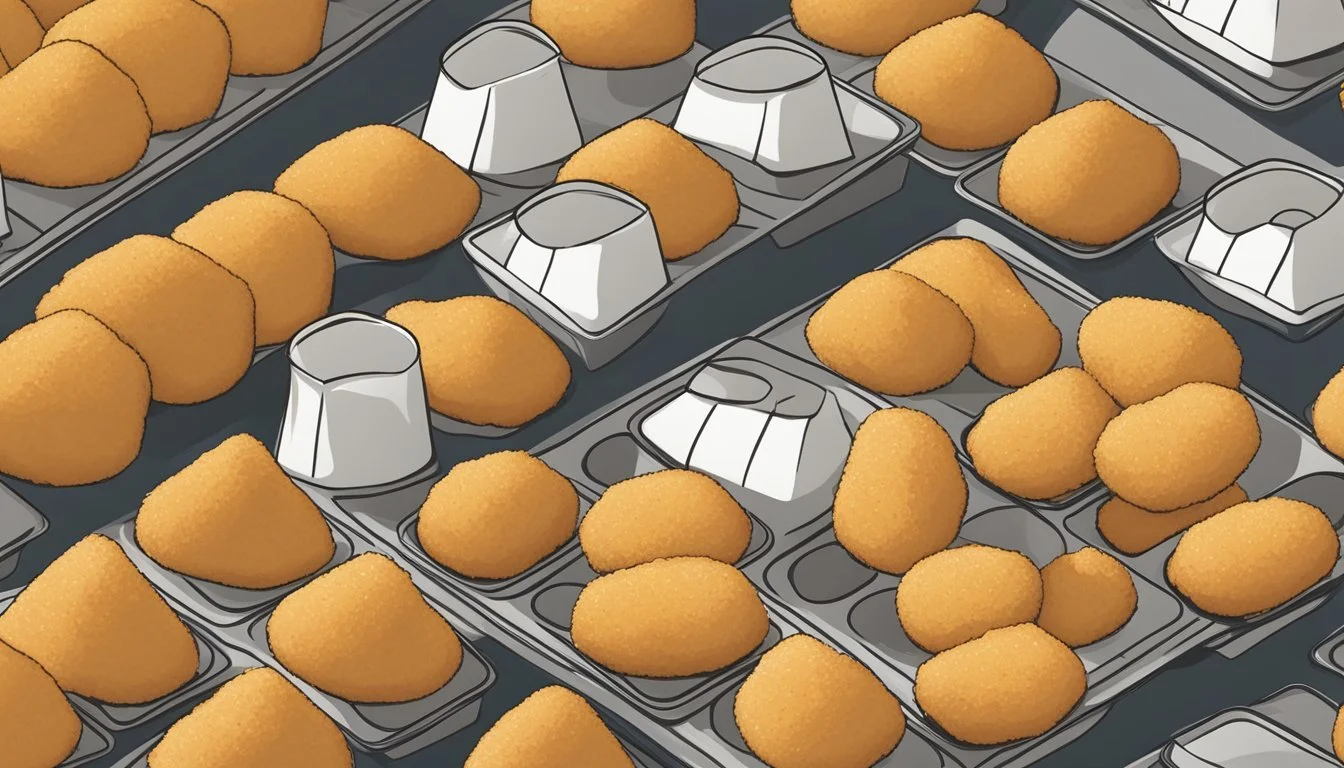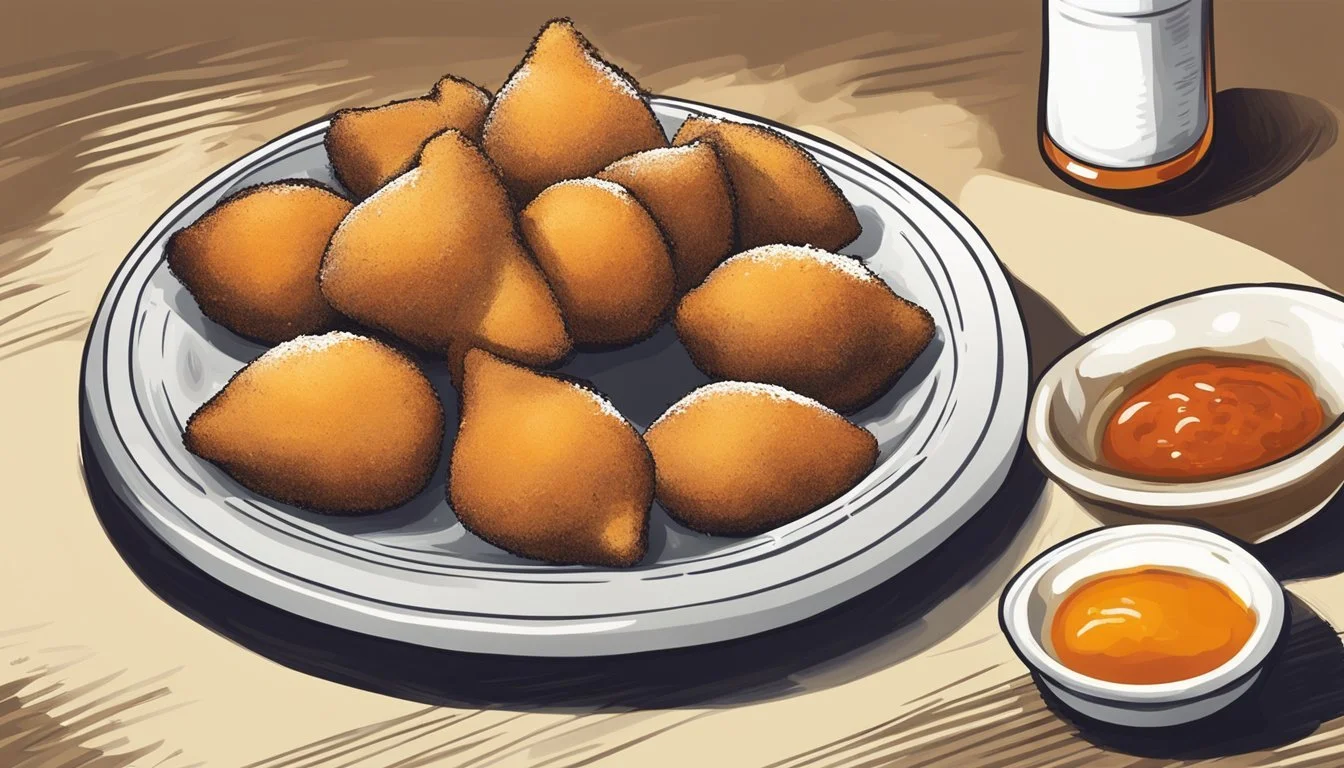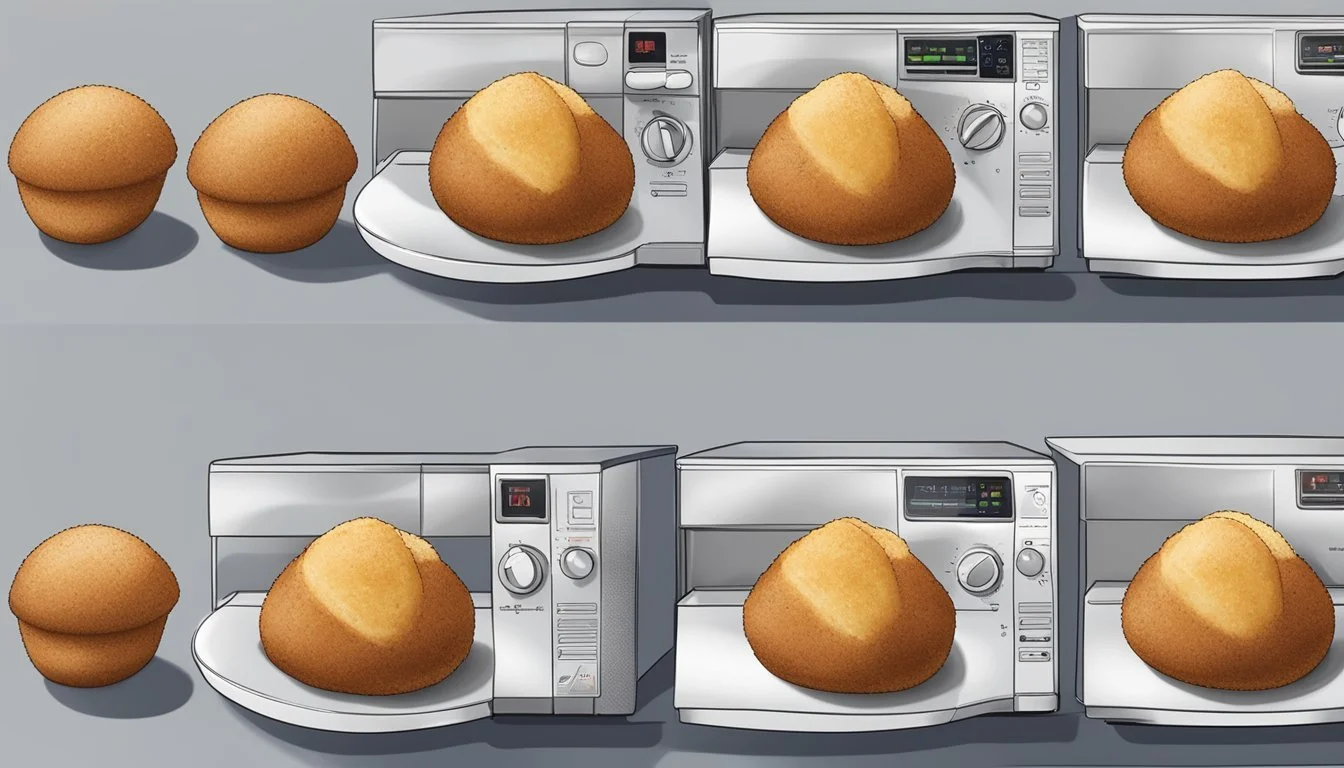How do you eat a coxinha?
Mastering the Brazilian Snack Experience
Eating a coxinha, a popular Brazilian street food snack, is a savory experience that tantalizes the taste buds with its unique combination of flavors and textures. The coxinha, shaped like a teardrop or a chicken drumstick, consists of a seasoned, shredded chicken filling encased in a soft, doughy exterior, which is then breaded and deep-fried to golden perfection. Originating from São Paulo, it has become a beloved treat across Brazil and is now enjoyed by people around the world.
To eat a coxinha, one doesn't need cutlery or elaborate preparations; it is designed for ease and enjoyment on the go. Typically served warm, its crispy exterior gives way to the tender and flavorful chicken filling inside with each bite. The snack is often accompanied by a squeeze of lime or a dollop of hot sauce to enhance its rich taste. Whether consumed as a quick bite on the streets of Brazil, enjoyed at a party, or savored as a comfort food, the coxinha delights with its simplicity and satisfying flavors.
Despite its casual street food origins, coxinha can also be found in various forms at fine dining establishments, showcasing the versatility of this Brazilian snack. Whether it's an upscale version with gourmet ingredients or the traditional, no-frills snack found at local markets and cafés, the essence of a coxinha is its comforting combination of chicken and dough. With its widespread popularity, it serves as a scrumptious introduction to Brazilian cuisine for those unfamiliar with the country's culinary diversity.
What Is a Coxinha?
A coxinha is a popular Brazilian snack that boasts a crispy golden brown exterior and a flavorful chicken filling. Typically served as an appetizer at parties and found at street food stands, this delicacy has become a symbol of Brazil's rich culinary culture.
Origins and Cultural Significance
The coxinha originated in São Paulo, Brazil, during the 19th century. It started as an upper-class appetizer and spread to other regions, becoming a beloved street food item by the 1950s. Coxinha's significance in Brazilian culture is reminiscent of the country's festive and communal atmosphere, commonly savored across events and gatherings.
Coxinha Characteristics
Shape and Texture: Coxinhas are recognized for their distinctive teardrop shape, intended to resemble a chicken drumstick. The snack's outer layer is a dough that becomes crispy and golden brown when deep-fried.
Flavor and Filling: The interior contains a tender mixture of seasoned chicken and often cream cheese. The interplay of its crunchy texture and the delicious, savory filling is what makes coxinha a cherished appetizer throughout Brazil and beyond.
Making Coxinha Dough
The dough for coxinha is a savory foundation that envelops the flavorful chicken filling. Mastery in mixing and handling the dough ensures a soft yet structured texture, which is crucial for the perfect coxinha.
Ingredients for the Dough
To prepare the dough for coxinha, one will need the following basic ingredients:
2 cups of all-purpose flour
1 tablespoon of butter
1 cup of milk
1 cup of chicken broth
A pinch of salt
Preparing the Dough
The dough preparation involves a few steps that are simple to follow:
In a large pot, combine the milk, chicken broth, butter, and salt, bringing the mixture to a boil.
Once boiling, reduce the heat and slowly add the all-purpose flour, stirring consistently to prevent lumps.
Stir the mixture vigorously until it forms a smooth and homogeneous dough that pulls away from the sides of the pot.
Remove the pot from heat and transfer the dough to a surface to knead while it's still warm.
Knead the dough for a few minutes until it's elastic and no longer sticks to the hands.
Tips for Perfect Dough
To achieve the perfect texture and consistency of coxinha dough, consider the following tips:
Ensure all ingredients are measured accurately for consistency.
One must knead the dough thoroughly until it is smooth; this process can take about 5 to 10 minutes.
If the dough is too sticky, a little more flour can be added, but do so sparingly to avoid drying out the dough.
Health Considerations
While coxinha is a delicious treat, individuals should consider its nutritional content:
The dough is primarily made of all-purpose flour, which may contribute to the calorie and carbohydrate content of the coxinha.
Adding butter and chicken broth introduces fat, but one can opt for low-fat versions to make it slightly healthier.
Though the dough itself contains little to no fiber, it pairs with a chicken filling, which could provide a small amount of protein.
By being attentive to the combination of ingredients and method of preparation, one can make a coxinha dough that complements the rich, savory filling perfectly while considering its nutritional impact.
Coxinha Filling
The coxinha filling is predominantly made from tender shredded chicken, which is seasoned with a mixture of aromatic ingredients and, at times, enriched with cheese. This crucial part of the coxinha defines the taste and flavor profile of the snack.
Cooking the Chicken Filling
To prepare the chicken filling, start by cooking chicken breasts in a pot with enough chicken broth to cover them. The chicken is simmered until fully cooked and then shredded. It's crucial to maintain enough liquid in the pot to prevent the chicken from drying out.
Seasoning the Filling
After shredding, the chicken is sautéed in olive oil with finely chopped onions and garlic cloves until they are soft and fragrant. One might add salt, pepper, and paprika for a subtle heat. Freshly chopped parsley and a dash of lime juice can also be incorporated for a bright, citrusy accent.
Adding Cheese to the Filling
Cheese is not a mandatory component, but it can add a creamy texture and depth of flavor. Cream cheese or the traditional Brazilian catupiry may be mixed into the seasoned, shredded chicken to enhance richness.
Vegetarian Alternatives
For those preferring a meat-free option, chicken filling can be replaced with a combination of corn and carrot, ensuring the filling is still rich in flavors. A vegetarian broth can be used to cook the vegetables, and seasonings are adjusted accordingly.
Storing Filling for Later Use
The filling can be stored efficiently if not used immediately. To store, one should cool it to room temperature, place in an airtight container, and then freeze. When properly stored, the chicken filling can last in the freezer and preserve its quality for future baking, reducing food waste and saving time.
Shaping and Breading Coxinhas
Creating the perfect coxinha involves mastering the art of shaping and breading. Precise handling is key to achieving the traditional teardrop shape and a crisp, well-adhered breadcrumb coating without introducing holes or irregularities.
Forming the Classic Teardrop Shape
To shape the dough into the signature coxinha, one begins by taking a piece of dough approximately the size of a golf ball. After flattening the dough into a circle, a tablespoon-sized amount of chicken filling is placed in the center. The dough is then folded around the filling, and hands are used to mold it into a teardrop form, which resembles a little thigh or drumstick. Ensuring the dough is sealed properly is crucial to avoid leakage during cooking.
Dredging and Breading Technique
For breading, the shaped coxinha is first rolled in flour, ensuring it is lightly coated. Next, the coxinha is dipped into a bowl containing a beaten egg, allowing for an even layer of egg wash to cover it. Finally, it is rolled in fine breadcrumbs to create the final coating. This multi-step process helps the breadcrumbs adhere properly and provides the coxinha with its classic golden, crispy exterior once fried in oil.
How to Avoid Common Mistakes
It is important not to leave gaps or holes in the dough as these can cause the coxinha to burst open during frying. Additionally, one should avoid overworking the dough, which can produce a dense texture. When breading, ensure each coxinha is thoroughly coated in each stage: flour, egg wash, and breadcrumbs, yet shake off any excess to prevent clumping or uneven cooking.
Alternative Shapes and Sizes
While the traditional shape is preferred, coxinhas can be made in various sizes to cater to different occasions and appetites. While forming the dough, maintain a consistent thickness to ensure even cooking. Smaller bite-sized coxinhas make great appetizers (What wine goes well with appetizers?), and larger versions can serve as a filling entrée. The shaping technique remains the same, adjusting for size while still aiming for the teardrop silhouette.
Cooking Methods
Coxinhas are versatile and can be prepared using various cooking methods, all of which aim to create a crispy exterior and fully heated, flavorful filling.
Deep-frying Coxinhas
To deep-fry coxinhas, one needs to heat vegetable oil in a skillet or deep fryer to 375°F (190°C). Once the oil reaches the proper temperature, the coxinhas should be submerged and fried until they turn a golden brown color. This process usually takes about 3-5 minutes. Using a slotted spoon, remove them from the oil and place them on paper towels to drain.
Baking Options
For a healthier alternative, coxinhas can be baked on a baking sheet in a preheated oven. Setting the temperature to 400°F (200°C) allows them to bake to a golden finish typically within 20-25 minutes. It's essential to turn them halfway through baking to ensure even cooking.
Using an Instant Pot or Air Fryer
An Instant Pot with a crisping lid or an air fryer can produce coxinhas that are crispy on the outside while using less oil. Set the air fryer to 390°F and cook for about 15 minutes, or use the Instant Pot's air-fry function according to the manufacturer's instructions. In both cases, the goal is to achieve a golden brown texture.
How to Tell When They're Done
Coxinhas are done when they have a deep golden brown color and are cooked through. The exterior should be crisp, while the interior is no longer doughy. If using a meat thermometer, the internal temperature should read 165°F (74°C).
Serving Suggestions
Serve coxinhas warm with dipping sauces such as mayonnaise, hot sauce, or a squeeze of lime. Garnish with chopped green onions. They pair well with caipirinha, a traditional Brazilian cocktail, or a cold glass of beer. For a complete experience, serve alongside Brazilian cheese bread.
Storing and Reheating
Coxinhas can be stored for later enjoyment with proper refrigeration or freezing and reheated to preserve their texture and flavor.
Refrigeration and Freezing Tips
For storing coxinhas in the refrigerator, they should be placed in an airtight container and can be kept for a few days. However, if one intends to preserve them for a longer period, freezing is a better option.
To freeze: Place the coxinhas on a baking sheet and freeze them for 2-3 hours. Once they are frozen, transfer them to a freezer-safe container or resealable bag. They can be stored in the freezer for up to 6 months.
Avoid freezer burn: Ensure that they are properly sealed to prevent freezer burn, which can affect the flavor and texture when reheated.
Best Methods for Reheating
To maintain the quality of coxinhas, reheating should be done carefully. There are multiple ways to reheat them, ensuring they remain delicious as if they were fresh.
In the oven: Preheat the oven to 350°F (175°C) and place the coxinhas on a baking sheet. If reheated from thawed, they require about 10-15 minutes. For frozen coxinhas, they need an additional 1-2 minutes.
Using an air-fryer: This method is effective for achieving a crispy exterior. Reheat at a temperature similar to the oven, but check frequently as the air-fryer may cook them more rapidly.
In a pot on the stove: It is less common but for a quick warm-up, one can use a pot on the stove over a low heat. Be watchful to avoid soggy or unevenly heated results.
When reheating, it's essential to ensure the coxinhas are heated through to a safe internal temperature and enjoy the restored crispiness and warm chicken filling.
Nutritional Information
A typical serving of coxinha, a popular Brazilian street food, contains significant nutritional elements. Given their deep-fried nature, coxinhas are calorie-dense appetizers. On average, a single coxinha has approximately 400 to 500 calories.
Protein content in coxinhas varies based on the chicken filling. They provide moderate protein, with an estimated amount ranging between 15 to 20 grams per serving. This makes them a decent source of this macronutrient, essential for muscle building and repair.
As for fat, due to the frying process, a coxinha has a high fat content, including both saturated and unsaturated fats. The fat content can be around 20 to 25 grams per serving. Individuals concerned with fat intake should consume coxinhas in moderation.
The fiber content in coxinhas is relatively low, as the main ingredients are refined flour and chicken, which do not contribute significantly to fiber intake. Coxinhas typically contain less than 2 grams of dietary fiber.
Sugars are generally not a concern with coxinhas, as they are savory treats and usually do not contain added sugars. However, sauces or condiments served with coxinhas may add sugars to the overall meal.
Below is a summary table of the average nutritional profile per serving:
Nutrient Amount Calories 400-500 kcal Protein 15-20 g Fat 20-25 g Fiber <2 g Sugar Minimal
The exact nutritional content will vary based on the size of the coxinha and the specific ingredients used.
Serving and Pairing Suggestions
Coxinha, a Brazilian chicken croquette, is a versatile dish often served as an appetizer, capable of being paired with various beverages and suitable for different events. This section will explore traditional Brazilian pairings, international flavors that complement coxinhas, and ideas for serving them at specific types of gatherings.
Traditional Brazilian Pairings
In Brazil, coxinhas are commonly enjoyed with a cold beer, which provides a refreshing contrast to the savory deep-fried snack. At more casual settings, it is not uncommon to pair them with caipirinha, Brazil’s national cocktail made with cachaça, sugar, and lime. This tangy drink complements the richness of the coxinhas. Additionally, coxinhas may be offered alongside cheese bread (pão de queijo), another Brazilian favorite, creating a hearty appetizer platter.
Drink Pairings:
Beer: Light lagers or pilsners.
Caipirinha: Traditional recipe with lime.
Food Complement:
Cheese Bread (Pão de Queijo)
International Pairings
Internationally, coxinhas can be served with a variety of sauces such as hot sauce for those who enjoy a spicy kick or creamy dips to balance the crunchy exterior. Lime wedges may also be provided to add a zesty flavor that cuts through the dish's richness. Globally, they can be paired with light-bodied white wines or crisp ciders as a sophisticated alternative to beer.
Sauces & Dips:
Hot Sauce
Creamy Dressings
Lime Wedges for squeezing
Beverage Options:
White Wine: Chilled, light-bodied varieties.
Cider: Dry or sweet, according to preference.
Event-Specific Serving Ideas
For events such as parties or gatherings, coxinhas prove to be a popular choice served on platters as an appetizer. Bite-sized versions can be circulated on trays for guests to enjoy a seamless snacking experience. During more formal events, they can be elegantly plated with garnishing herbs and paired with curated wine selections to enhance the flavors and present a more upscale dining experience.
Parties:
As appetizers: Small, cocktail-sized coxinhas.
On trays: Easy to circulate among guests.
Formal Gatherings:
Plated Service: Garnished with herbs.
Curated Wine Pairing: To elevate the experience.


